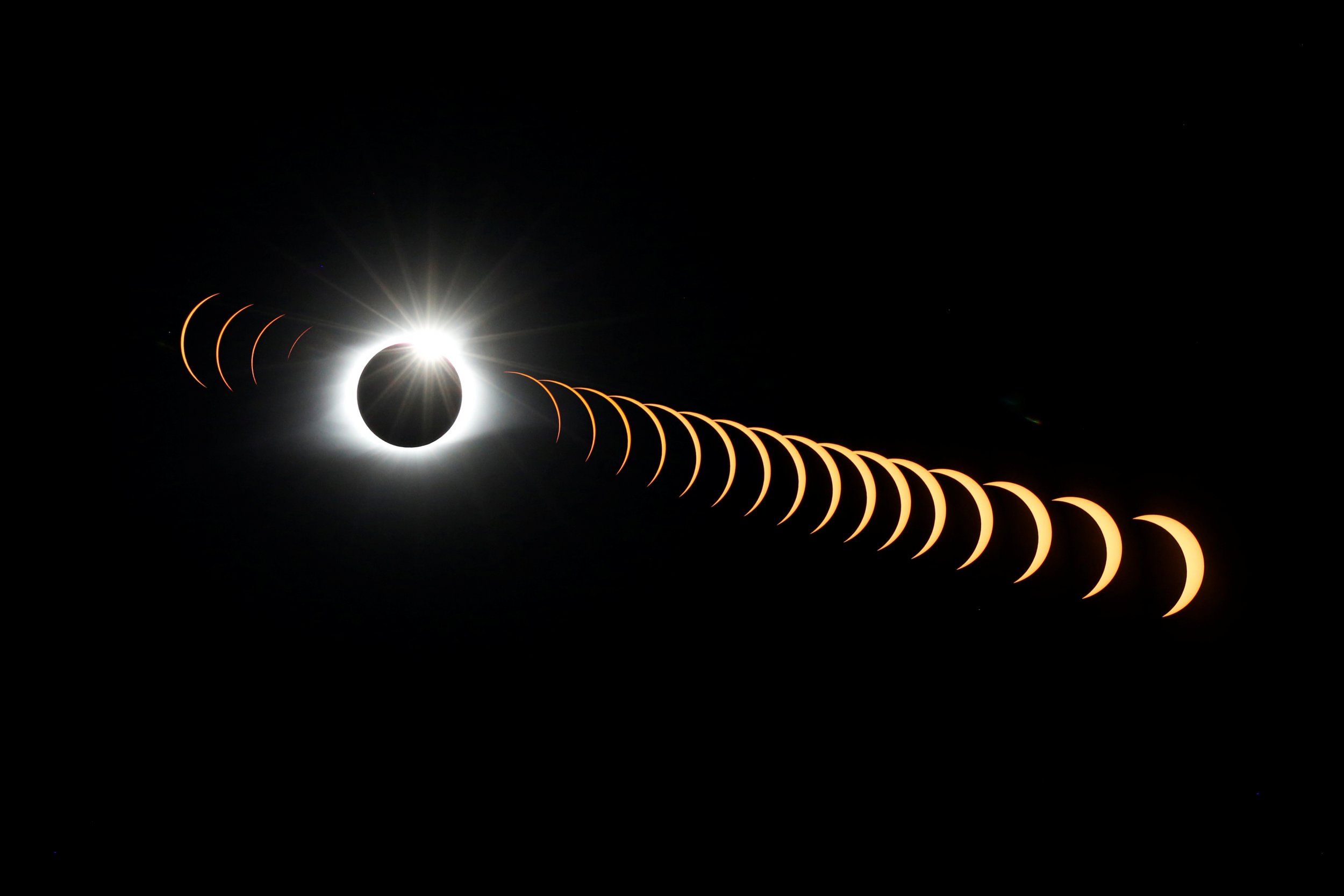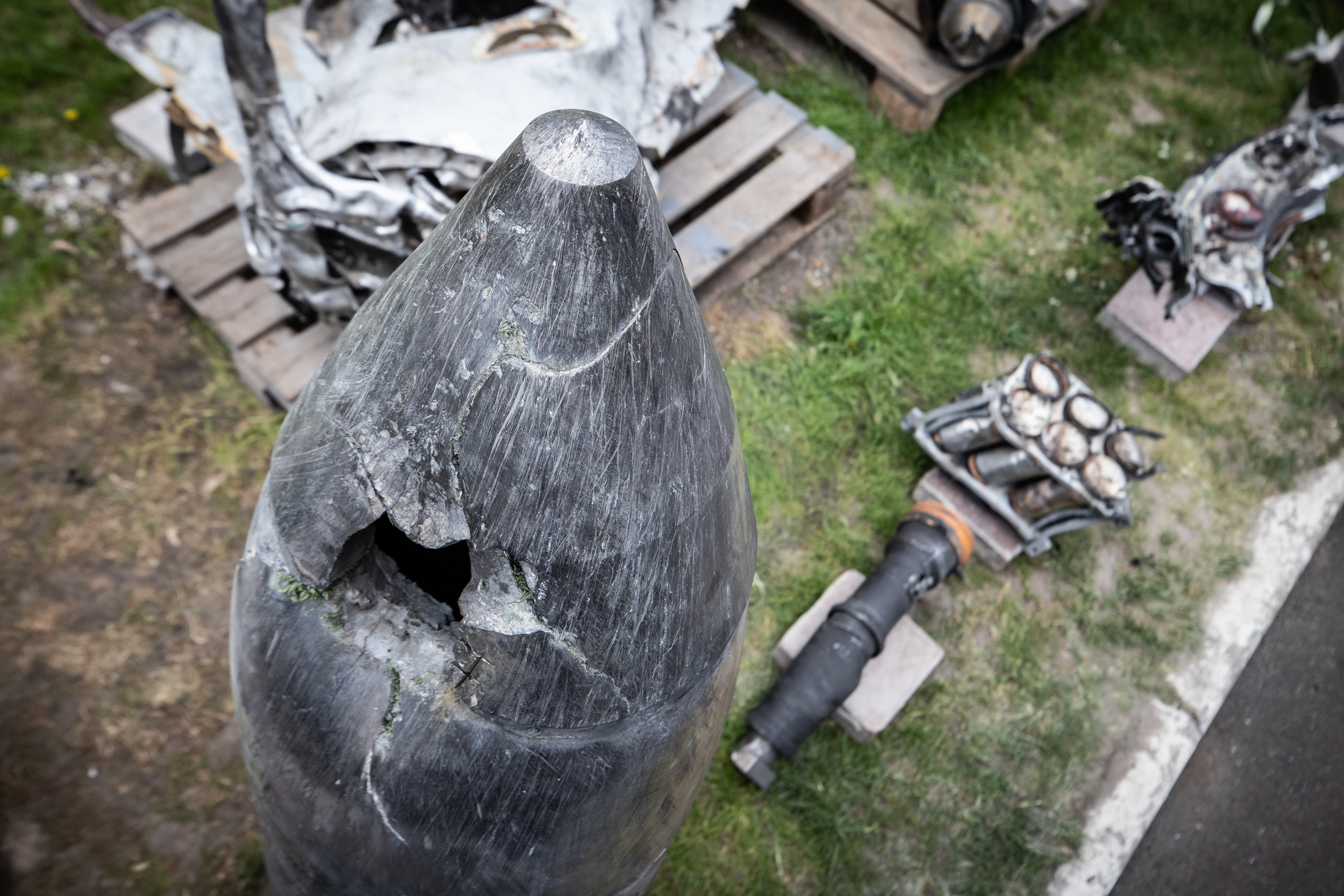
Updated | The Great American Eclipse of August 2017 left a 'wake' in the Earth's upper atmosphere, the way a ship does when it moves through water. The phenomenon has been theorized about, but never before detected, according to Gizmodo.
A collaboration between researchers at the Massachusetts Institute of Technology's Haystack Observatory and researchers at the University of Tromsø in Norway revealed the waves in our planet's ionosphere, the ionized section of its upper atmosphere. The researchers tracked the waves using satellite data from 2,000 sensors placed at different locations across the United States, according to Gizmodo. A paper describing the work as "the first unambiguous evidence" of atmospheric bow waves was published in the scientific journal Geophysical Research Letters.
When the Earth's moon passes in front of the sun, it temporarily blocks not only the light we receive from the sun but also its heat. The shadowed zone, as Gizmodo explained, sees a marked drop in heat energy, and because that zone isn't a single static location but moves along as the moon does, it creates a bow wave effect as it travels: a ripple of contrasting, decreased heat energy moving across the atmosphere.
The researchers wrote in their paper that the "large ionospheric perturbations" they recorded were traveling at supersonic speeds. That means they were moving too quickly to be gravity waves or other kinds of established processes of ionospheric disturbance.
Bow waves: familiar in front of boats, & also formed in the atmosphere & in space http://t.co/SmAfQx3vyy #HTEscience pic.twitter.com/Ze1dCBOXi9
— Chandra Observatory (@chandraxray) February 28, 2014
Scientists have theorized the existence of bow waves before, but past research didn't have the benefit of anywhere near the amount of data as what was gathered during the August eclipse, according to Gizmodo. This time, the vast network of Global Navigation Satellite System receivers were able to detect atmospheric ripples across the ionosphere of the central and eastern United States.
"We were looking at some phenomena that were expected but never had the chance to be observed," corresponding author Shun-Rong Zhang of the Haystack Observatory told Gizmodo. "That was the surprise we found.... We had a large coverage, and our system is sensitive enough to be able to see these smaller variations. That was really very interesting to us."
Geomagnetic storms can potentially disrupt satellite systems, not to mention our electrical power grids, according to Haystack Observatory. But Zhang said we don't need to worry about bow waves incurring any damage like that, reported Gizmodo. Rather, this is a safe and apparently very fruitful research opportunity.
"This study reveals complex interconnections between the Sun, Moon, and Earth's neutral atmosphere and ionosphere," wrote the authors in their paper.
Back in August, Boston University electrical and computer engineering professor Joshua Semeter told the university that bow waves (also sometimes referred to as stern waves) were among the phenomena he and his colleagues were hoping to capture during the eclipse.
Semeter, who is not one of the authors of the new paper (though he does study the ionosphere), referred to the eclipse shadow as a "supersonic sun shade," according to Boston University. Like the researchers from Haystack Observatory and the University of Tromsø, he emphasized that the means by which different parts of the atmosphere connect and interact with each other often aren't well understood, and that the data gathered from the eclipse could help us learn more about those relationships.
"It's like a controlled experiment," Semeter told Boston University in August. "Mother Nature is providing us a nice experimental environment."
This article has been updated to include additional information about atmospheric interactions.
SaveSave
SaveSave
Uncommon Knowledge
Newsweek is committed to challenging conventional wisdom and finding connections in the search for common ground.
Newsweek is committed to challenging conventional wisdom and finding connections in the search for common ground.
About the writer
Kastalia Medrano is a Manhattan-based journalist whose writing has appeared at outlets like Pacific Standard, VICE, National Geographic, the Paris Review Daily, ... Read more
To read how Newsweek uses AI as a newsroom tool, Click here.








